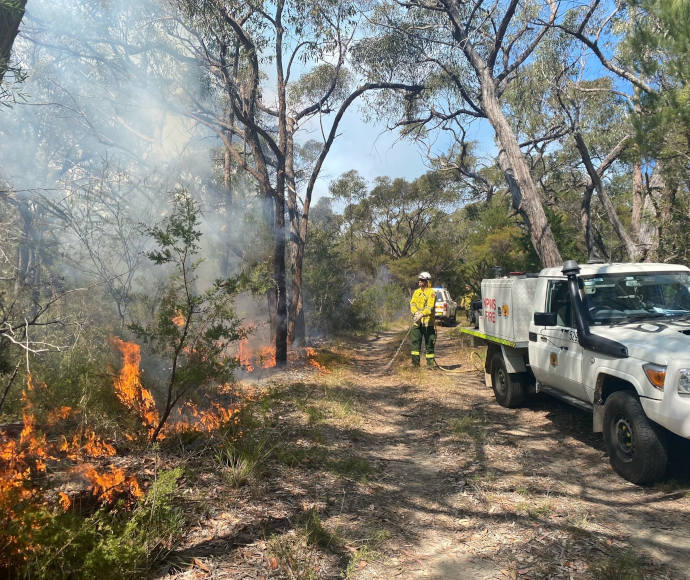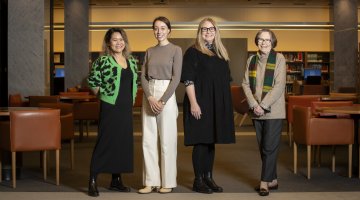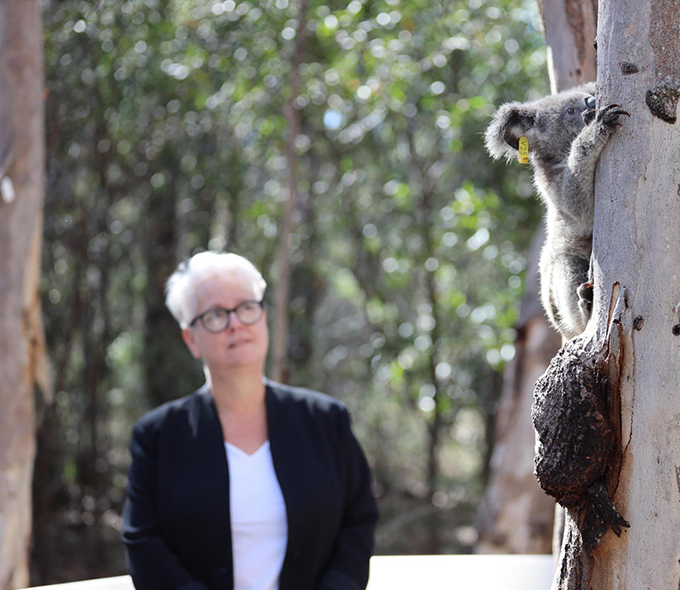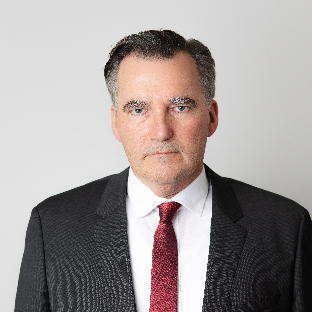RMIT’s bold vision for a shared innovation spine in Melbourne’s city north will create a precinct where people and technology connect to improve community wellbeing.
Two years ago, through the Victorian Higher Education State Investment Fund (VHESIF), the Victorian Government funded RMIT to develop a detailed proposal for the creation of a social innovation precinct in Melbourne’s city north.
The City North Social Innovation Precinct, bordered by Lygon, Victoria, Swanston and Queensberry streets, will be home to research, ideas, skills and new technology. It will bring together expertise and skills from different disciplines, organisations and backgrounds to engage with the major social challenges of our times.
Tom Bentley, Executive Director Policy, Strategy & Impact, led the development of the proposal in collaboration with many people across the RMIT community including professional staff, educators, researchers and students, as well as extensive consultation with stakeholders across higher education, government and industry.
“The vision is to renew the precinct in a way that builds on the history and character of this unique area, through a skills-led urban renewal that creates innovation and learning opportunities for Victoria’s diverse, fast-changing community, and generates solutions to some critical challenges, including social innovation, emerging technologies, smart and sustainable cities, and Asia-Pacific collaboration,” Bentley said.
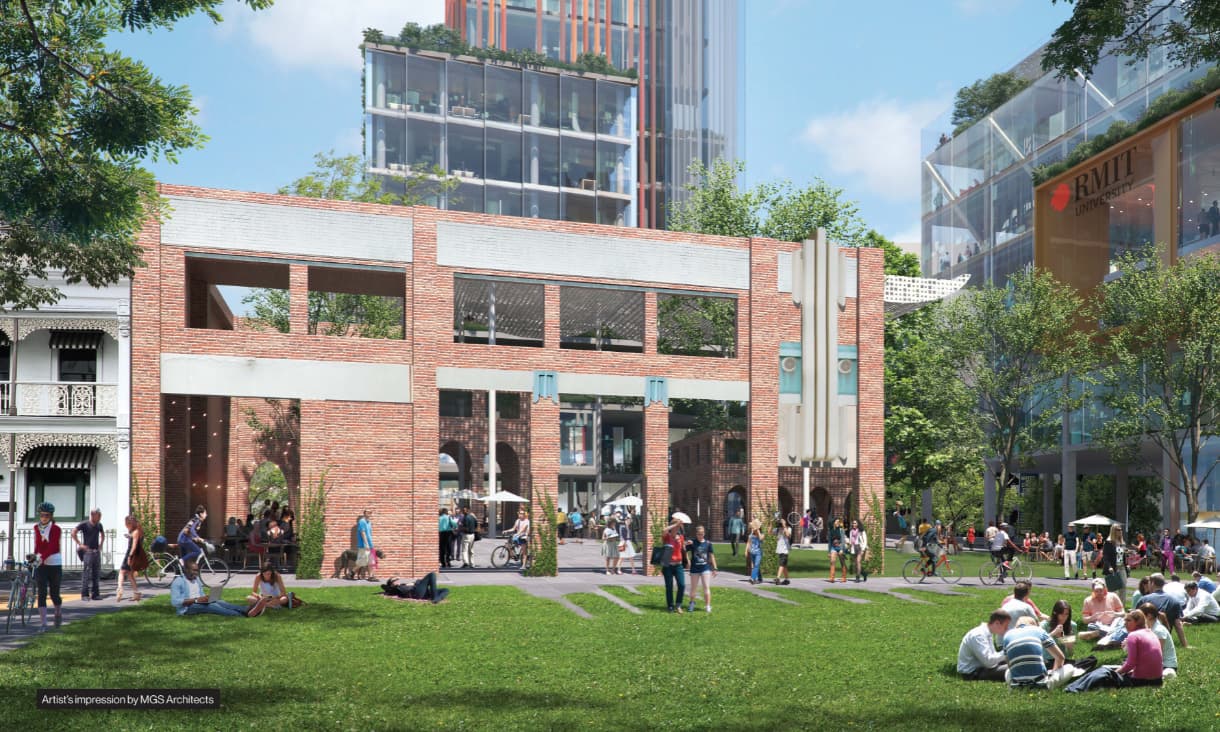 An artist’s impression of what the City North Social Innovation Precinct could look like.
An artist’s impression of what the City North Social Innovation Precinct could look like.
The precinct will train tens of thousands of highly skilled workers for the Victorian economy over the next two decades, contributing to major workforce challenges such as electrification, mental health and social care, connecting them with an innovation ecosystem in City North, opportunities in South-East Asia, and developing a lifelong learning culture that extends widely across Victoria’s diverse and talented community.
“As an institution with a proud history of delivering vocational education, higher education, research and innovation, it is very exciting to be developing this renewed activity with our partners, on the doorstep of Melbourne’s extended public transport network, as the Metro Tunnel project nears completion,” Bentley added.
Early examples of innovation and impact
The social innovation precinct is a 20-year vision that will progress through RMIT-led activities and prospective partnerships which will collaborate on the funding, design and delivery of the plan.
There are already early examples of the precinct coming to life and driving collaborations between academics, students, industry, and the wider RMIT community. These include the Social Innovation Hub, Activator, Health Transformation Lab, Workforce Innovation and Development Institute (WIDI), PlaceLab, Asia Trade and Innovation Hub (ATIH), and the Multifaith and Wellbeing Centre which opened to RMIT staff and students in June.
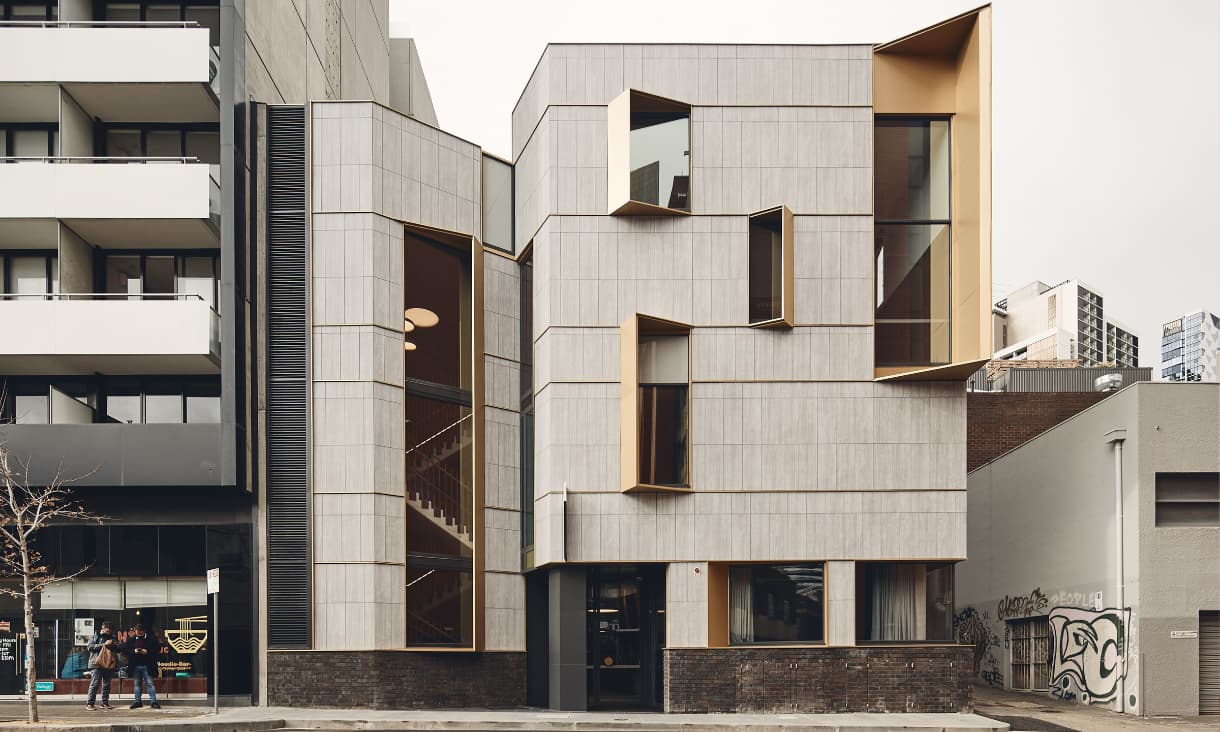 RMIT’s Multifaith and Wellbeing Centre opened to RMIT staff and students in June.
RMIT’s Multifaith and Wellbeing Centre opened to RMIT staff and students in June.
Internationally, RMIT’s Research and Innovation Hub (RMIT Europe) in Barcelona, Spain and the latest industry and innovation hub in Hanoi, Vietnam (launched in June this year) are the start of a broader interconnective network that will link up with the precinct.
Front doors to RMIT in Melbourne, these hubs offer a platform to partner with community and industry across our City North ecosystem and into South-East Asia the region on workforce training needs, digital transformation and broader impact agendas including the net zero transition and future care economy.
A new framework for inclusive and sustainable economic development
At a recent event that brought together stakeholders involved in the development of the social innovation precinct master plan, RMIT launched its new Place and Community Framework which will guide RMIT’s approach to the social innovation precinct and its international locations.
The framework includes six principles which synthesise RMIT’s approach to place:
- Indigenous celebration
- Belonging, openness and interconnectedness
- Impactful learning environments
- Innovation ecosystems and local economies
- Sustainability
- Connectivity.
These principles express what RMIT commits to doing in each of its places – to maximise the values and purpose we are working to develop and embed in each location and community and help to deliver its Knowledge with Action strategy.
The event featured a panel discussion with RMIT experts and community partners and covered some of the key progress that’s been made with City North since 2021, and the potential for partnership and impact into the future.
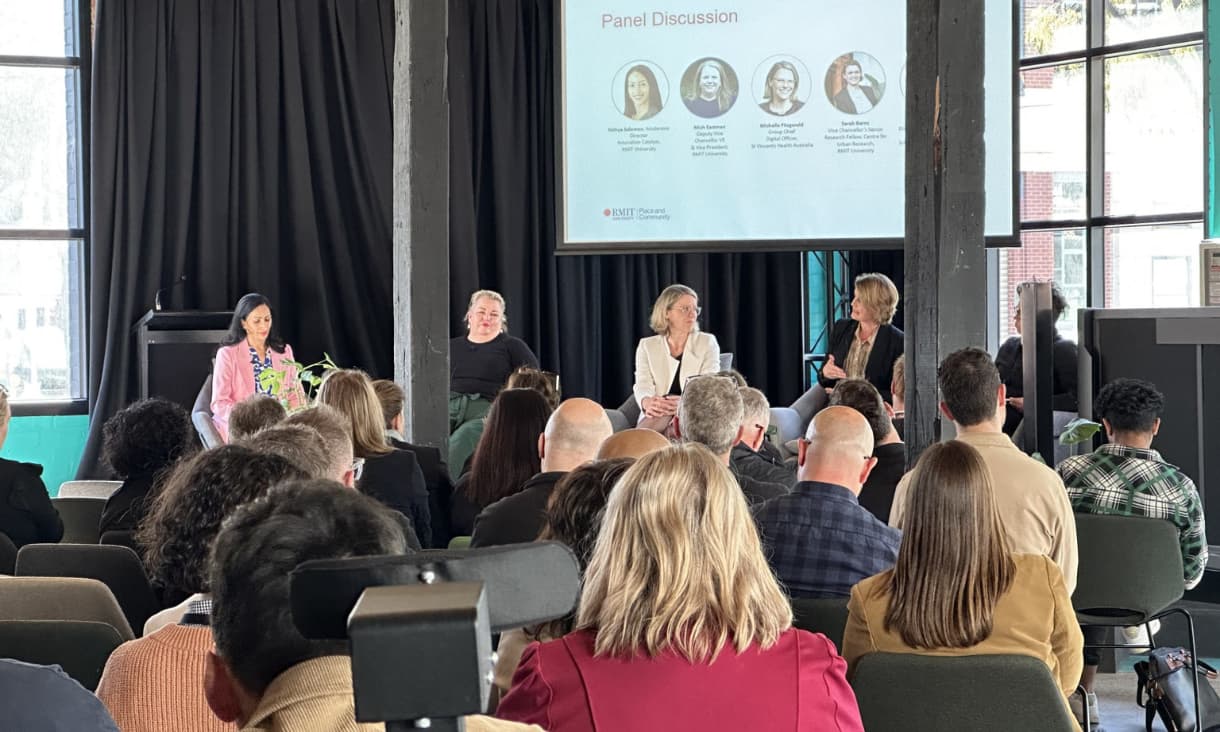 L-R: Nithiya Solomon, Mish Eastman, Michelle Fitzgerald, Sarah Barnes and Naomi Stead discussing the potential of RMIT’s City North Social Innovation Precinct.
L-R: Nithiya Solomon, Mish Eastman, Michelle Fitzgerald, Sarah Barnes and Naomi Stead discussing the potential of RMIT’s City North Social Innovation Precinct.
Host Mish Eastman, Deputy Vice-Chancellor, College of Vocational Education (CoVE), spoke about some of the innovations in the precinct already coming to fruition, citing the recent innovative Skills in Employment program (SkiP) and Higher Apprenticeships Pilot (HATSSEP) which have been designed and delivered by WIDI and CoVE in partnership with Jobs Victoria.
The innovative ‘earn and learn’ programs have helped fill a skills gap and workforce shortages in aged and disability care organisations, with 500 new people placed in care and support roles and 500 existing workers upskilled with new qualifications.
“In Building 51 on Victoria St there are thousands of students and workers currently developing their skills in critical domains like health, community services, youth work, alcohol and other drugs, and mental health,” Eastman said.
Eastman also touched on the potential to implement earn and learn models in the precinct.
“From O’Grady place and behind towards Lygon Street, we have graduates coming out all the time across all of the streams of engineering and IT.”
“So how we scale up in an innovation precinct, look at earn and learn models where these learners are integrated with great businesses and employers, and solve the problems of today and tomorrow in real time while also training and learning is a fantastic opportunity.”
Scaling the precinct
The Place and Community website is an important mechanism for engaging with prospective partners – across sectors and industries.
“We want to build on what is already occurring in this precinct, scale partnerships with government, industry and the not-for-profit sector, create more social enterprise networks and leverage international opportunities,” Bentley said.
“There are already thousands of students, educators, industry partners and community members using this unique precinct, and there are many ideas for growing these working relationships to create positive outcomes for Victoria’s future and supporting inclusive growth in the wider Asia-Pacific region.”

